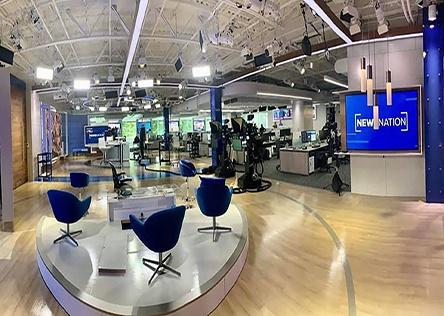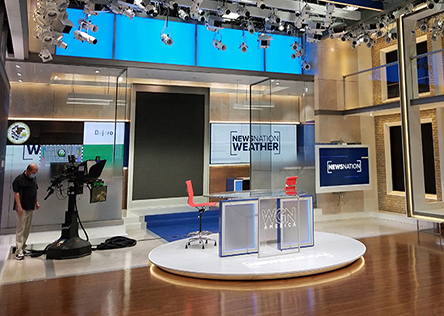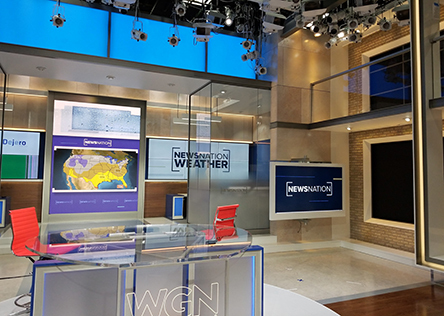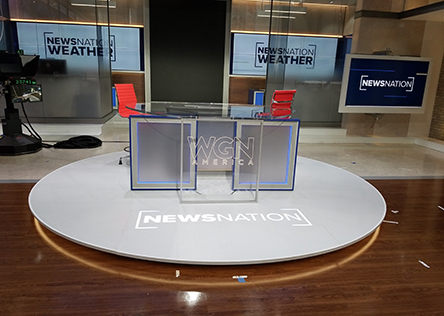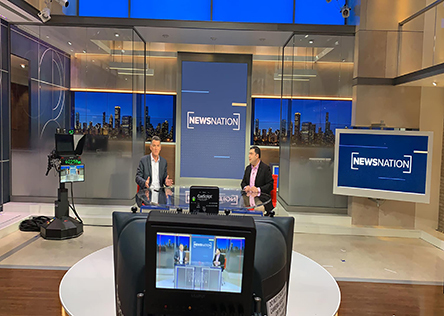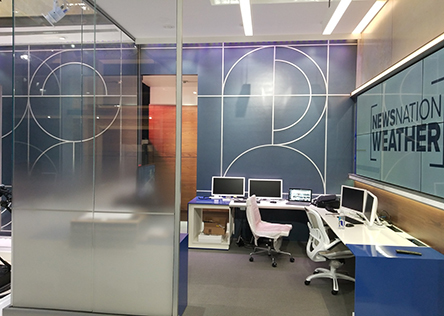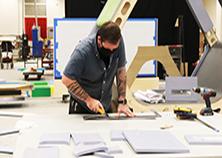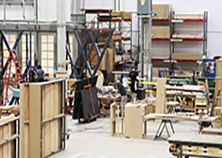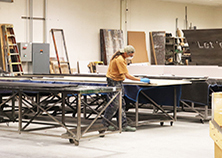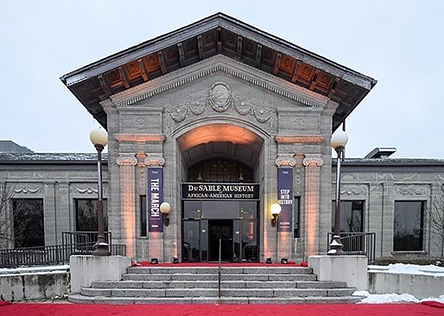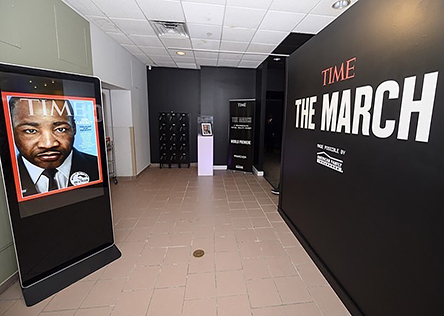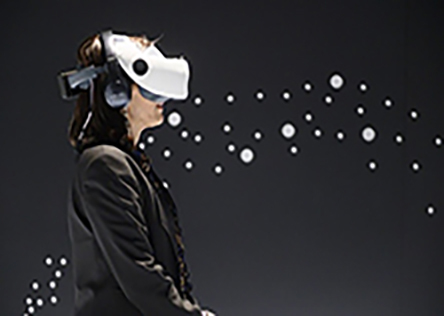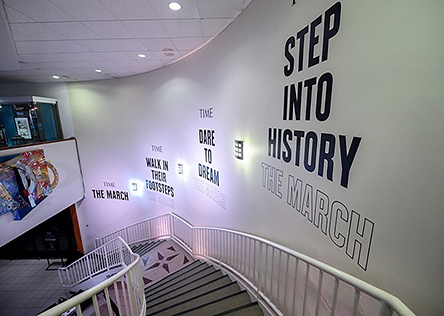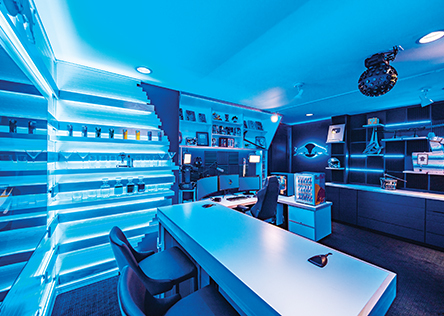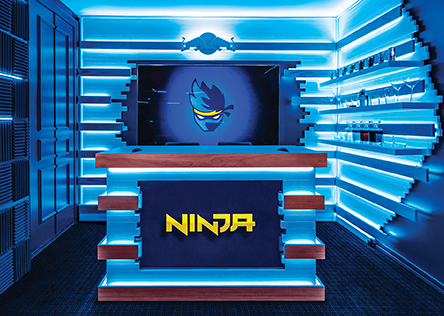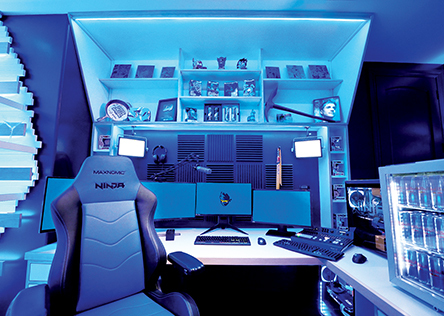The DuSable Museum of African American History Does “The March” in Virtual Reality
The DuSable Museum of African American History in Chicago is featuring “The March”, an immersive and fascinating virtual reality experience created by TIME Studios and a host of other partners—including Chicago Scenic Studios.
The exhibit offers a realistic moving experience that features a virtual reality recreation of the 1963 March on Washington and includes a new way of experiencing Dr. Martin Luther King’s iconic “I Have A Dream” speech.
The full exhibit was designed by the award-winning exhibition and media design firm, Local Projects. It is designed to provide visitors with an intimate experience: Only four guests at a time move through the series of small exhibit rooms, including a sound bath room and VR room with LED lights on the walls and floors. The LED lights enhance the feel and tone of the rooms as participants listen to various testimonials and a crowd of people marching outside the Washington Monument.
Chicago Scenic’s first challenge was to create the exhibit environment and transform the approximately 2800 sq. ft. exhibit space into five small rooms to approximately 400 sq. ft. each. Our team built each rooms’ walls by wrapping them in soundproof insulation and black fabric, to ensure that sound did not bleed from one room to another room. The team also replaced a few ceiling tiles with soundproof tiles and built various pieces of furniture, including the benches in the entrance, round stools installed in the sound bath and the podium in the VR room.
“The exhibit environment was designed as a minimalistic backdrop to remove all external sensory input and ultimately and completely focus visitors on the exhibit content,” said Jim Mallerdino, Senior Project Manager at Chicago Scenic Studios. “As guests first enter the shaded darkened exhibit, they encounter the check-in desk created by Chicago Scenic. The desk is a simple structure, a glowing wooden box encased in a larger acrylic box with LED lights that provide the glow and its inviting, essential design to standout in the dark, quiet room”, Mallerdino said.
As guests move into the next room, the sound bath, LED strips that follow the room’s molding feature RGB color changing bulbs that softly illuminate the room. “The room’s minimal ‘palate’ demanded high attention to detail,” Mallerdino continued, “since the aesthetic was essentially a black space. The space is small and visitors encounter the room in a close-up and personal way, we needed to pay great attention to detail to remove imperfections that would stand out”.
In the sound bath room, the focus is on large screens where visitors watch media content about significant civil rights events. For example, the historical event about Rosa Parks taking a seat at the front of the bus to the leading main historical event of The March on Washington.
Next, guests enter the VR experience, they step into their own small rectangle marked by LED strips embedded in the floor and are provided with a VR headset. Chicago Scenic Studios worked closely with Matt O’Rourke, a producer for Digital Domain, the firm that managed VR production, to create the intricate particle pattern on the room’s black walls.
“We wanted the wall pattern to provide a subtle mystical and futuristic feel and look. On a practical note, the pattern also needed to ensure that the VR goggles tracked the space properly. This was a challenge because after the VR experience debut, it took a few adjustments and attempts to get the environment just right,” according to Chicago Scenic’s Jim Mallerdino.
The VR experience realistically inserts visitors into The March on Washington as they surround the Washington Monument’s reflecting pool, then move up, positioning them just 10 ft. from the podium, as Dr. Martin Luther King delivers his famous “I Have A Dream” speech. The speech is delivered in a way most visitors haven’t heard before, using the original audio and part of the virtual reality experience that is promised to take everyone back to August 1963.
Finally, guests enter the final room, where they see authentic signs carried by civil rights marchers and poster reproductions that they are encouraged to take home. The exhibit’s minimal environment and the juxtaposition of experiences, from audio and video to the VR experience to the final room’s physical components provides a meaningful transition out into the world.
“The March” VR exhibit is scheduled to remain at the DuSable Musuem of African American history throughout the end of November 2020. The museum has temporarily suspended operations due to COVID-19.
Visit the DuSable Museum of African American History for more information about The March: A Groundbreaking VR Experience.


